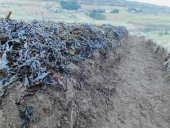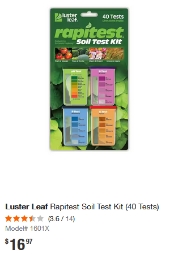Charles,
I don’t have kudzu, but I do (Actually, DID) have Japanese Honeysuckle which behaves much like kudzu and can be a real problem if left to get out of control by which point it can be a real pain.
I cut back all of mine, right to the root crown, a little cluster of roots and vines that spread out, cover practically everything and then can kill from causing excessive shade.
One root crown put out a huge amount of vines, but once I found the crown and aggressively, relent, mercilessly dug it out, as deep as I could dig and still find taproot, it just didn’t have the fight left in it. What was left was very deep in the ground, buried (I made sure) and now *IT* was shaded by vegetation now set free. The tables had been turned!! I went back the next season prepared for war but I never saw any growth come back up.
In the end, yes, one single plant can get extremely aggressive and grow relentlessly, but finding that root crown meant that I had found its Achilles heel, its weakness. At that point, it was a little work, but the result was well worth the effort.
Note: I base all this from honeysuckle. I assume but don’t know specifically that kudzu has similar growing habits.
Hope this helps,
Eric






